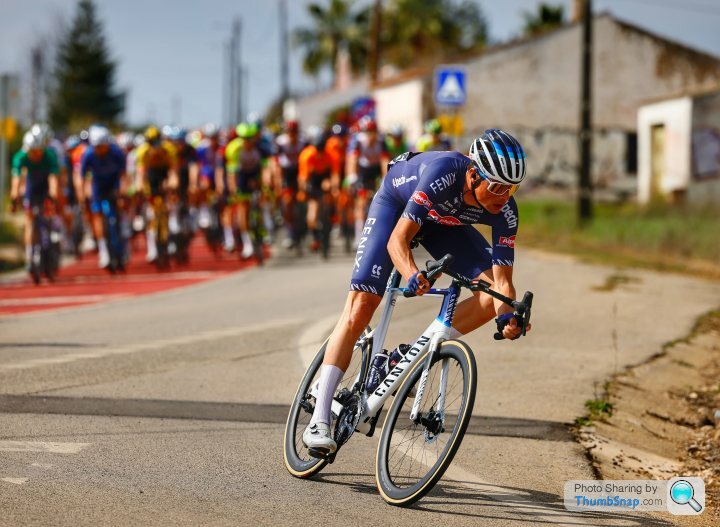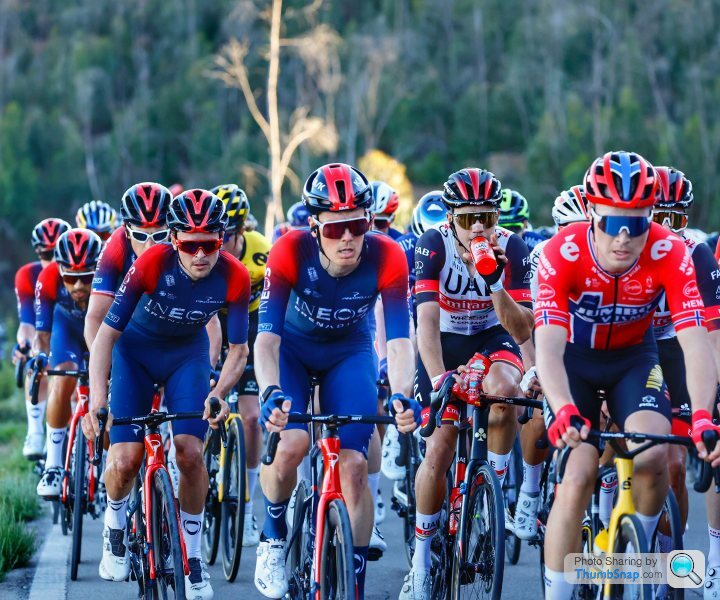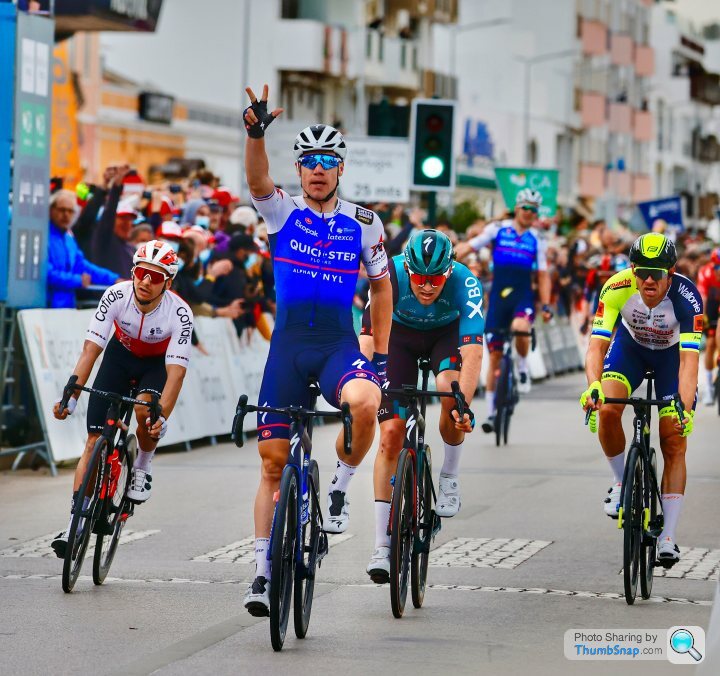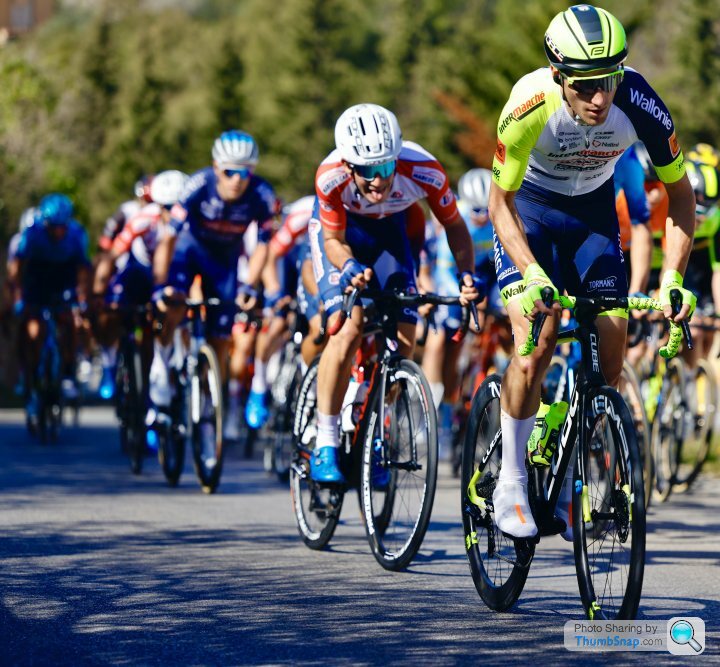Image stabilisation - How much actual point is there to it?
Discussion
Yes, I know it sounds wonderful in theory, and of course there are situations where it's really handy in practice, but do we actually use it as much as we think we do?
I've just been looking at details of the new Canon RF 200-800mm, for which they're claiming 5.5 stops of lens IS, boosted to 7.5 stops with IBIS, which got me thinking... Where on earth would I actually benefit from that?
At the long end, without any IS on my FF camera, I'm looking at needing an exposure of no more than 1/800sec to avoid camera shake handheld. Add in just a couple of stops of IS and I'm down to 1/200sec, which admittedly is great, especially given that I'm limited to f/9!
Go beyond those 2 stops, though, and what happens? The chances are I'm going to get motion blur from the subject which just negates the benefits of having the extra IS. I've been trying to think of anything I might want to shoot at 800mm with a shutter speed of, say, 1/50sec, and I just couldn't think of anything, because anything I do shoot with a lens that long is liable to be a moving wild bird or something.
Take it to the other end of the scale for landscapes around the 15mm focal length and I can already get a pretty long exposure without having to worry about camera shake, and realistically if I'm going much below that, I'm likely to be taking low-light landscapes where I'll use a tripod to get the camera perfectly level anyway, so again I don't see a use case for the sort of IS we have now.
Even in the mid-range, for street photography, portraiture, product photography or whatever, I'm really struggling to think of many situations where I wouldn't be using a tripod or seeing the benefits of IS negated by a moving subject.
Am I missing something obvious???
I've just been looking at details of the new Canon RF 200-800mm, for which they're claiming 5.5 stops of lens IS, boosted to 7.5 stops with IBIS, which got me thinking... Where on earth would I actually benefit from that?
At the long end, without any IS on my FF camera, I'm looking at needing an exposure of no more than 1/800sec to avoid camera shake handheld. Add in just a couple of stops of IS and I'm down to 1/200sec, which admittedly is great, especially given that I'm limited to f/9!

Go beyond those 2 stops, though, and what happens? The chances are I'm going to get motion blur from the subject which just negates the benefits of having the extra IS. I've been trying to think of anything I might want to shoot at 800mm with a shutter speed of, say, 1/50sec, and I just couldn't think of anything, because anything I do shoot with a lens that long is liable to be a moving wild bird or something.
Take it to the other end of the scale for landscapes around the 15mm focal length and I can already get a pretty long exposure without having to worry about camera shake, and realistically if I'm going much below that, I'm likely to be taking low-light landscapes where I'll use a tripod to get the camera perfectly level anyway, so again I don't see a use case for the sort of IS we have now.
Even in the mid-range, for street photography, portraiture, product photography or whatever, I'm really struggling to think of many situations where I wouldn't be using a tripod or seeing the benefits of IS negated by a moving subject.
Am I missing something obvious???
Image stabilisation stabilises the camera, reducing camera shake. It doesn't reduce subject movement.
I've used Panasonic cameras for years, and stabilising is most noticeable when I use non-stabilised cameras.
I've got a 100-300 lens, 200-600 in old money, and the reduction in shake is remarkable, especially when zooming in to near maximum. I can also take close-up images with significantly reduced shake.
I wouldn't be without it, and this despite using a tripod and monopod extensively. There is a point to it.
The numbers may or may not add up. 6.5, 7.5? What on earth to they mean practically?
I've used Panasonic cameras for years, and stabilising is most noticeable when I use non-stabilised cameras.
I've got a 100-300 lens, 200-600 in old money, and the reduction in shake is remarkable, especially when zooming in to near maximum. I can also take close-up images with significantly reduced shake.
I wouldn't be without it, and this despite using a tripod and monopod extensively. There is a point to it.
The numbers may or may not add up. 6.5, 7.5? What on earth to they mean practically?
Derek Smith said:
Image stabilisation stabilises the camera, reducing camera shake. It doesn't reduce subject movement.
I've used Panasonic cameras for years, and stabilising is most noticeable when I use non-stabilised cameras.
I've got a 100-300 lens, 200-600 in old money, and the reduction in shake is remarkable, especially when zooming in to near maximum. I can also take close-up images with significantly reduced shake.
I wouldn't be without it, and this despite using a tripod and monopod extensively. There is a point to it.
The numbers may or may not add up. 6.5, 7.5? What on earth to they mean practically?
The numbers given are exposure stops, so if you could shoot hand-held at 1/200 before you get camera shake, then one stop of IS lets you go to 1/100, two to 1/50, three to 1/25 and so on.I've used Panasonic cameras for years, and stabilising is most noticeable when I use non-stabilised cameras.
I've got a 100-300 lens, 200-600 in old money, and the reduction in shake is remarkable, especially when zooming in to near maximum. I can also take close-up images with significantly reduced shake.
I wouldn't be without it, and this despite using a tripod and monopod extensively. There is a point to it.
The numbers may or may not add up. 6.5, 7.5? What on earth to they mean practically?
Given that, there's massive benefit to you having one or two stops of IS, but by the time you get to five, my point is that you might still be able to get rock solid shots with a really slow shutter speed, but I don't really see that as a benefit because in many cases you're just going to lose your sharpness to subject movement instead of camera movement.
I can see a number of scenarios where it might be useful. As you say, moving subjects it's limited. But anything static or fairly still, it could be a huge benefit. Landscape (admittedly maybe an 800mm lens is not typical but long lenses generally are used a lot). Even wildlife, you might well have a subject that is sat still, staring at you! In motorsport for panning shots when you might have a fast moving subject but still get right down into the lower end of shutter speeds. Some lenses even have a dedicated IS setting for panning. The other thing that I think is often overlooked is that IS can be extremely useful for fine focusing or composition before you even take a picture. It can even be useful on a tripod in terms of getting rid of that last bit of vibration or maybe dealing with a stiff breeze.
Gad-Westy said:
I can see a number of scenarios where it might be useful. As you say, moving subjects it's limited. But anything static or fairly still, it could be a huge benefit. Landscape (admittedly maybe an 800mm lens is not typical but long lenses generally are used a lot). Even wildlife, you might well have a subject that is sat still, staring at you! In motorsport for panning shots when you might have a fast moving subject but still get right down into the lower end of shutter speeds. Some lenses even have a dedicated IS setting for panning. The other thing that I think is often overlooked is that IS can be extremely useful for fine focusing or composition before you even take a picture. It can even be useful on a tripod in terms of getting rid of that last bit of vibration or maybe dealing with a stiff breeze.
I rather thought you were supposed to turn the IS off if using it on a tripod?I tend not to use image stabilisation.
My understanding is it comes in two flavours,
Some people may choose to use both forms at the same time. Optical in the lens and digital in the camera.
My understanding is it comes in two flavours,
- Digital stabilisation, tends to cause delay by waiting for the camera to be still enough, and
- Optical stabilisation, where the lens or sensor are moved mechanically to counter camera movement.
Some people may choose to use both forms at the same time. Optical in the lens and digital in the camera.
Kermit power said:
Gad-Westy said:
I can see a number of scenarios where it might be useful. As you say, moving subjects it's limited. But anything static or fairly still, it could be a huge benefit. Landscape (admittedly maybe an 800mm lens is not typical but long lenses generally are used a lot). Even wildlife, you might well have a subject that is sat still, staring at you! In motorsport for panning shots when you might have a fast moving subject but still get right down into the lower end of shutter speeds. Some lenses even have a dedicated IS setting for panning. The other thing that I think is often overlooked is that IS can be extremely useful for fine focusing or composition before you even take a picture. It can even be useful on a tripod in terms of getting rid of that last bit of vibration or maybe dealing with a stiff breeze.
I rather thought you were supposed to turn the IS off if using it on a tripod?Kermit power said:
Derek Smith said:
Image stabilisation stabilises the camera, reducing camera shake. It doesn't reduce subject movement.
I've used Panasonic cameras for years, and stabilising is most noticeable when I use non-stabilised cameras.
I've got a 100-300 lens, 200-600 in old money, and the reduction in shake is remarkable, especially when zooming in to near maximum. I can also take close-up images with significantly reduced shake.
I wouldn't be without it, and this despite using a tripod and monopod extensively. There is a point to it.
The numbers may or may not add up. 6.5, 7.5? What on earth to they mean practically?
The numbers given are exposure stops, so if you could shoot hand-held at 1/200 before you get camera shake, then one stop of IS lets you go to 1/100, two to 1/50, three to 1/25 and so on.I've used Panasonic cameras for years, and stabilising is most noticeable when I use non-stabilised cameras.
I've got a 100-300 lens, 200-600 in old money, and the reduction in shake is remarkable, especially when zooming in to near maximum. I can also take close-up images with significantly reduced shake.
I wouldn't be without it, and this despite using a tripod and monopod extensively. There is a point to it.
The numbers may or may not add up. 6.5, 7.5? What on earth to they mean practically?
Given that, there's massive benefit to you having one or two stops of IS, but by the time you get to five, my point is that you might still be able to get rock solid shots with a really slow shutter speed, but I don't really see that as a benefit because in many cases you're just going to lose your sharpness to subject movement instead of camera movement.
I use the IS on my lenses in addition - apart from my f1.4 prime - and what it means for me is that I can run at lower ISO, supposedly important for MFT.
For me, it seems to vary on the day how much it helps. I expect, at my age, much is down to how I'm feeling at the time. At the end of a day's shooting just about every part of my body is shaking. If I can, I go for the long shots early on.
I do a bit of video as well and the stabilisation in the software is magic. I can run at 4K, so can crop to a certain extent. The video stabilisation tends to lose a bit of the frame size, but with 4K for YouTube, it's fine. I got into conversation with another Panasonic G9 owner at a show, and he commented on me having my tripod with me. He reckoned he no longer needed one in daylight.
If you don't think you need stabilisation because you use a tri/monopod, then the upgrade is probably not worth the extra cost. However, I love the ability to handhold a shot at 280mm (equiv) on my gp zoom and know that the shot will be shake free. I've tried it at 500mm, although with an elbow on a guardrail, and the result was good.
I've mentioned macro. Here's one taken with a standard zoom with an extension tube.

I've taken prettier images.
Here's one I'm especially pleased with. It's a hires image - 120MP RAW from a 20MP (reduced for PH of course). It takes four images and then, in camera, adds them together. I had a remote camera trigger and wedged myself into a convenient tree. I'm impressed. Quite chuffed. Not an image that you'd stick on a wall, but still pleasing.


Depends what you're using it for but I'd rather have more available than not. As a car photographer it has 2 fantastic benefits - car to car tracking photography where you can shoot really slow shutter speeds to get lots of motion blur into the shot, in this scenario for me the more stabilization the better. Secondly when shooting details, particularly in car (often dark colours, often in shadow), it makes it far quicker and easier to get the shots you want because either (a) you don't need to faff around with a tripod which can be tricky in-car (b) you can use much narrower apertures for plenty DoF without having to crank up ISO to compensate the shutter speed as VR does the job of allowing perfect sharpness at - say - 1/5 second.

500mm, ¼ second. Taken last night when I was a very tired boy. No way could that shot have been taken by me last night without image stab, simple as that.
As mentioned above, I’d rather have it than not, and IS is better now than it was 20 years ago. Why wouldn’t you want it? It’s not as if you can by the 200-800 or 100-500 lenses without it! In fact, if the manufacturers offered their lenses with and without IS, there’d have to be a huge reduction in price to tempt enough people to buy the non-IS lenses to make them financially viable.
Kermit power said:
Yes, I know it sounds wonderful in theory, and of course there are situations where it's really handy in practice, but do we actually use it as much as we think we do?'
I generally have IS on the lens and IBIS switched on, and have no doubt that it helps a lot in getting sharp images, BUT, the question you asked above made me have a look through my FlickR albums for some examples where it was absolutely key in getting the image, and I have to say that there were relatively few.As you correctly point out, especially with longer lenses, a lot of the time you are shooting moving subjects, so a fast shutter speed is required to freeze the motion, which most of the time means that IS would have little/no effect.
The main type of photos where it IS important, is stuff like Fullook posted which enables hand-held shots with stationary elements remaining sharp, yet allowing a slow shutter speed to capture movement. I guess the other is in low light with a stationary subject where a tripod isn't practical, so enabling a shot, where it would have been very difficult otherwise.
The other area where it is very helpful (not that I do much of this), is shooting video - especially with longer lenses.
1/4 second at 24mm handheld:
 3O2A7223 by conradsphotos, on Flickr
3O2A7223 by conradsphotos, on Flickr1/4 second at 105mm handheld:
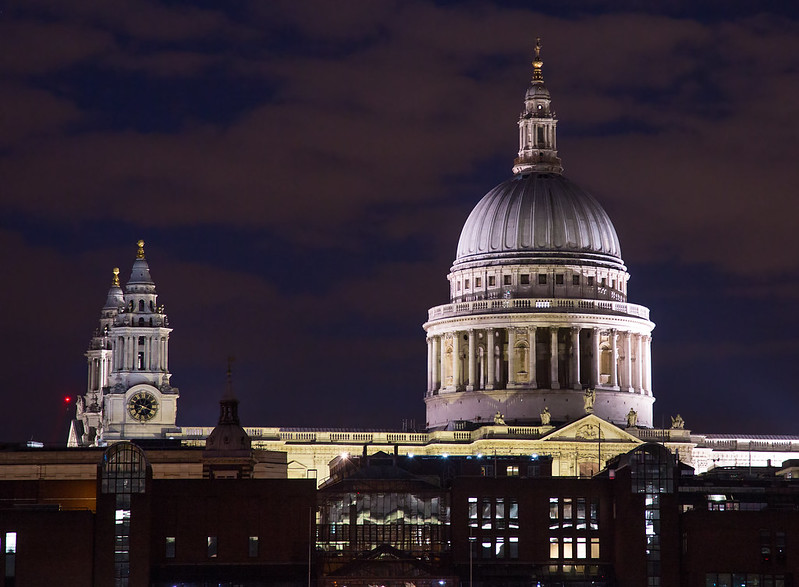 3O2A7235 copy by conradsphotos, on Flickr
3O2A7235 copy by conradsphotos, on FlickrShort video (6 seconds) - click through to FlickR to play:
 4A4A0294 by conradsphotos, on Flickr
4A4A0294 by conradsphotos, on FlickrEdited by C n C on Wednesday 20th December 11:41
1.6s in the hind head tunnel
 Flat Out by damianmkv, on Flickr
Flat Out by damianmkv, on Flickr
And 1/6s in wales
 Autumnal Wales by damianmkv, on Flickr
Autumnal Wales by damianmkv, on Flickr
2.5 seconds
 Fireworks by damianmkv, on Flickr
Fireworks by damianmkv, on Flickr
All handheld.
I miss Olympus for their IBIS
 Flat Out by damianmkv, on Flickr
Flat Out by damianmkv, on FlickrAnd 1/6s in wales
 Autumnal Wales by damianmkv, on Flickr
Autumnal Wales by damianmkv, on Flickr2.5 seconds
 Fireworks by damianmkv, on Flickr
Fireworks by damianmkv, on FlickrAll handheld.
I miss Olympus for their IBIS
Edited by damianmkv on Thursday 28th December 19:43
Edited by damianmkv on Thursday 28th December 19:45
YorkshireStu said:
I may be wrong, but these look to me like prime examples for where I was thinking that we don't use IS as much as we might think! 
It looks like you've got plenty of light on a sunny day, you've chosen a shutter speed fast enough to freeze the action (including the spokes on the wheels) and, at least on the top one, a wide enough aperture to give you a nicely out of focus background, so unless you're using a 1,200mm lens with a TC I'd imagine you were probably shooting with a shutter speed fast enough to not need IS?
Kermit power said:
I may be wrong, but these look to me like prime examples for where I was thinking that we don't use IS as much as we might think! 
It looks like you've got plenty of light on a sunny day, you've chosen a shutter speed fast enough to freeze the action (including the spokes on the wheels) and, at least on the top one, a wide enough aperture to give you a nicely out of focus background, so unless you're using a 1,200mm lens with a TC I'd imagine you were probably shooting with a shutter speed fast enough to not need IS?
Surely much of your argument on these specific images would depend on what the shots would have been like had IS not been used. (Not critcising Yorkshire Stu's ability as a photographer of course.) Also, and for me more importantly, is does, to a significant extent, lift the restrictions on shutter/aperture balance. Also, as I mentioned earlier, I run with M4/3 and it allows me lower ISO, although the noise is nowhere near as bad as some suggest.
It looks like you've got plenty of light on a sunny day, you've chosen a shutter speed fast enough to freeze the action (including the spokes on the wheels) and, at least on the top one, a wide enough aperture to give you a nicely out of focus background, so unless you're using a 1,200mm lens with a TC I'd imagine you were probably shooting with a shutter speed fast enough to not need IS?
Despite it needing a fair bit of the battery, I have IS enabled most of the time when the camera is not on a tripod.
Gassing Station | Photography & Video | Top of Page | What's New | My Stuff










